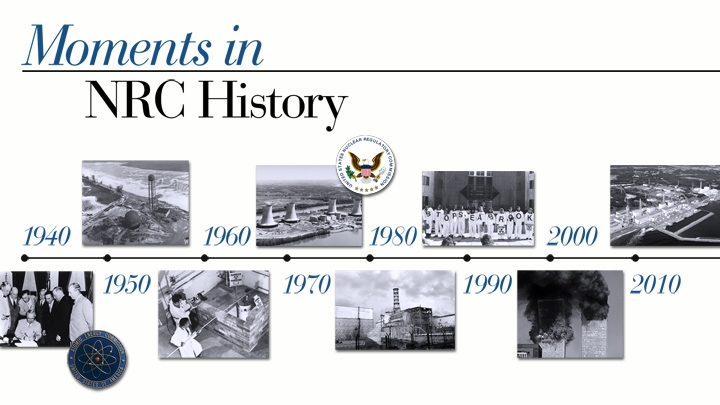Moments in NRC History: Research and Test Reactors Series
Thomas Wellock
Historian
One of the earliest proposals to meet “the promise of the peaceful atom”
was a small research reactor so simple and inexpensive that
universities could buy one for scholars and students. That was the plan
back in April 1948.
The Atomic Energy Commission (the NRC’s predecessor agency) touted
research reactors as a peaceful counterpoint to nuclear weapons. The AEC
thought research reactors could jump-start a civilian industry at home
and cultivate allies abroad. And in large measure, it worked. As the
nation’s first civilian owned reactors, they broke down military secrecy
and demonstrated the atom’s peaceful potential for education, medicine,
research, and industry.

The
first of a series of videos outlining this promise and the unique
safety challenges of research reactors went live today on the NRC’s
YouTube channel.
The video starts its journey with North Carolina State College’s
first civilian-owned reactor — part of its new program in nuclear
engineering. Then, two years later, Oak Ridge’ research reactor made a
debut in Geneva, Switzerland, in 1955. It was an inexpensive “swimming
pool” reactor unveiled at the world’s first international conference on
the peaceful uses of nuclear energy. Over 60,000 people, including prime
ministers, royalty, and presidents, lined up to peered down into the
blue glow of the future.
As the video points out, dozens of universities and corporations
followed with their own research reactors. They were small, safe, and
used only a small amount of uranium fuel compared to nuclear power
plants. For only a small investment, researchers could open up the
secrets of the atom and produce isotopes critical to medicine and
industrial uses. Ultimately, these research reactors led to the
innovative idea of testing the age of ancient pottery
Worldwide more than 670 research reactors were built in 55 countries with 227 in the United States alone.
We hope you’ll take the time to watch the video. And look for the
next one coming soon, focusing on key challenges in ensuring safety,
preventing diversion of fuel for weapons, and preserving the benefits
of research reactors even as their numbers have declined.

















